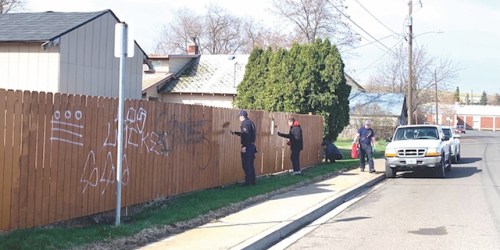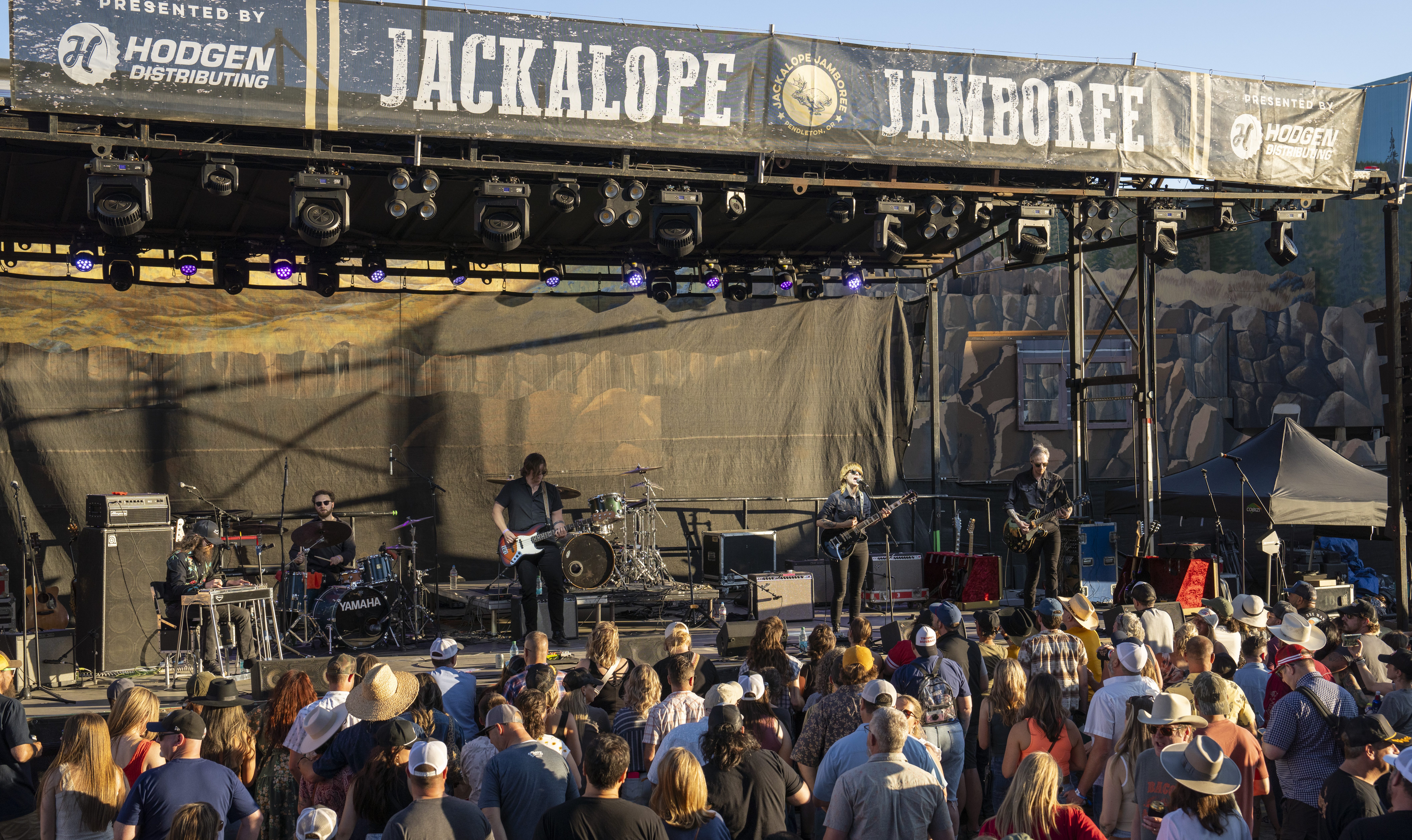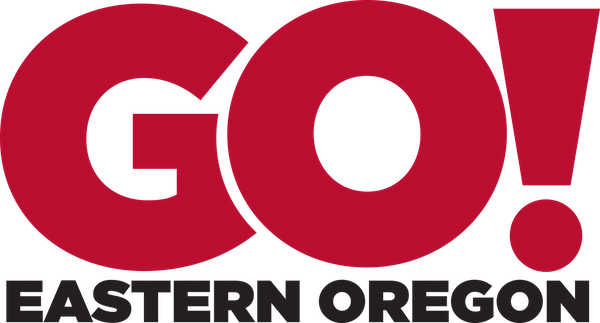Reversing graffiti uptick with new eyes
Published 5:15 pm Thursday, April 10, 2025

- Milton-Freewater is looking at ways to address the graffiti problem. (Mike Odman/City of Milton-Freewater)
Milton-Freewater city officials looking at ways to block its spread and go after vandals
MILTON-FREEWATER — A Milton-Freewater City Council work session on the evening of March 24 brought renewed attention to the town’s continuing battle against graffiti.
More than three years ago, graffiti began noticeably spreading out of the neighborhoods known for being vandalized with spray paint and into more public-facing areas. Councilor Wes Koklich and others brought the growing graffiti problem — and the significant harm it brings — to the council’s attention in 2022.
Koklich noted then the damage was extending to several city parks, highway signs and privately owned fences.
Now an elected official has made what is an unusual move here to use social media to encourage the public to weigh in on how to communally solve the problem.
In mid-March, first-term Mayor Mike Odman posted on Facebook about the work session, inviting participation to devise strategies addressing the escalating graffiti issue.
Although work sessions happen intermittently in Milton-Freewater, public participation in them had not been so clearly sought. Odman said communication on this issue from those he represents is an invaluable tool in finding solutions.
Soon after the mayor’s Facebook invitation to the March 24 meeting, a long fence bordering a home in the south end of Milton-Freewater was painted with gang signs. Odman again went to Facebook to ask the town to step up.
“This fence has been repeatedly vandalized. I have spoken with the homeowner, who would greatly appreciate any assistance in restoring it. I know that our community has numerous volunteers eager to contribute to its beautification. Please let me know if you are interested in participating, and I will arrange the details,” he wrote.
They did, volunteers outnumbering paintbrushes, Odman later said in an update.
Days later, a vision care business on the town’s main thoroughfare was spray painted in the night, the second reported graffiti incident in March. Visual Eyes on Highway 11 has a decades-long history of supporting youth and others in the community, and the outrage at the act expressed on social media was palpable.
The momentum of that frustration carried over a few days later into the work session, with nearly 30 people showing up, including a number of city police officers.
City Manager Chad Morris opened the meeting, saying he’s been learning about what can be done about the issue since he began the job about nine months ago.
His research has included talking with officials in other cities and at the state to seek useful solutions for Milton-Freewater.
What hasn’t been helpful is a tendency to point to police officers over the incidents.
“I am not seeing anything that says the police are not doing what they can do,” Morris said.
Ben and Kate Winters, owners of Visual Eyes, have installed high-quality video surveillance and the police were able to move quickly on the latest tagging, Morris told the roomful of people.
The offender was identified and released to his parents; any further action will happen through the Umatilla County District Attorney or the courts, Morris pointed out.
“Unless you can figure out a way to change the behavior of the people that are doing it, there’s not a lot of prevention that you can do,” he added.
Who, what can help?
In the work session, city officials said they are looking at graffiti-proof coatings, more cameras and lighting, using historical data to watch for hot spots, checking on what vandals can be charged with, and surface protection tools.
Morris said he’s been meeting with Hermiston’s code enforcement officer and learning about ideas there that could work here, including a modernized graffiti code and looking closer at what degree of lawbreaking should be applied.
Some of the vandals are kids with “nothing better to do,” Morris said, but more of them are gang-related.
Pastor Tim Sanchez asked for demographics of who is doing the graffiti, including gang makeups.
“If they are the Spanish folks that are mostly responsible, maybe the Spanish folks can help us?” he queried.
“They know their people, but they’re not here. They’re never here … Was this meeting put in Spanish for the Spanish-speaking to know this was taking place?” Sanchez asked.
“Probably not,” Morris responded, noting he wasn’t expecting this to be a town hall-style meeting, before Councilor John Lyon asked that the meeting be directed away from racial biases.
Odman spoke of designated city space for “want-to-be artists” and of increased community engagement.
“Many hands make light work,” he said, noting lots of people want to help, given the opportunity to do so. “See something, say something and then we do something about it … Stay on top of it.”
At the lectern, resident Bub Makhno said he believes the answers to the vandalism don’t have to include arrest of juveniles as a first resort. A community-centered approach, including reaching out to families, would show support. Helping at-risk teens by helping their families with food and utility assistance could pay off better than a punishment-first approach, Makhno said.
Graffiti is illegal and the police have a job to do, Morris said, but the first instinct is not to “grab people and take them away from their families. There’s enough upheaval in today’s world,” he said.
Kate Winters said after the damage to their vision business, she and her husband could have used a fact sheet about what products are effective on what surfaces, and which professionals to call for help, like sandblasting services.
“We wasted some money on products that didn’t work. We bought a pressure washer, that was great and we had the funds,” she said, suggesting a city-owned pressure washer could be made available to residents.
Odman said creating a mission statement — which the city council lacks — that sums up how officials will approach this kind of vandalism and other issues is vital to bring purpose and focus to the council.
It should capture “this is what we’re all about,” he said.
Wakhno agreed.
Everyone should be involved in developing such a statement and what goes into advertising Milton-Freewater to others, he said.
“It should definitely say ‘You are not too stupid to be in government.’ I feel people who work at McDonald’s should be able to come in here and still feel like they have something to contribute. I feel like that’s the only way we’re going to get anyone’s attention. Not everything has to be hard. We can have almost every person on the street in this very library,” Wakhno said.
Morris suggested the council consider the options and opportunities presented in the session, and be ready to bring their thoughts to the table in the near future.
The morning of March 25, Morris said he was feeling positive about the meeting and the ideas offered. Having the people who live in Milton-Freewater help solve the graffiti challenge offers the best chance at success.
“The graffiti issue is not something that came about overnight and we won’t be able to fix it overnight. But it’s definitely time to attempt to reverse the direction it’s going,” he said.
Odman said his goal in using social media to encourage participation was met.
“Having citizens there with an opportunity to share, I thought was great. I wanted to hear good ideas of what we, as a community, can do to get ahead of (graffiti) and to keep our town beautiful. There was some really good information,” he said.
“What’s within not only our city government,” Odman said, “but what can we do as a community to work together?”









